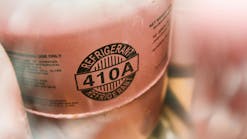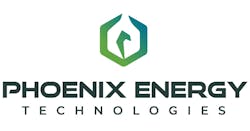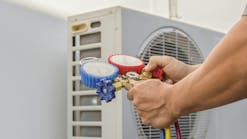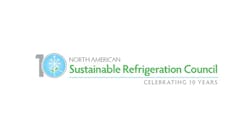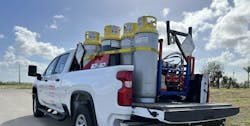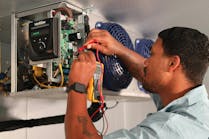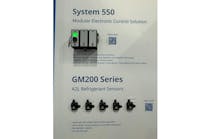Witman began the discussion in our comfortable Chicago venue by asking, what are the greatest issues you face, or are most concerned about?
Bryan Beitler, vice president of engineering for Source Refrigeration & HVAC, Anaheim, Calif., said he’s most preoccupied with issues related to refrigerants, a topic that often shoots to the top of the list.
“How do we minimize more refrigerant leaks? How do we transition to something that’s new and better? How do you keep the cost in line, from a maintenance perspective? Beitler asked. “To me that’s very high on the list, and affects contractors and end users. It’s incumbent upon us to jump in and do something about this soon. It’s not the new stuff so much, as the old stuff we still have to manage and take care of. We all have our ideas and thoughts there, but to me, it’s quite critical.”
Beitler added that he sees a need for improved methods for predicting mechanical failures or refrigerant leaks.
“How can I know it’s going to break down before it actually does? How do I know it’s going to leak before it leaks? How do I get ahead in the game? There are many discussions around the industry by folks who are developing products that will help us get there. I’m not sure if they’ve been totally tested, proven, and found their way into the mainstream yet. But what if I can do something to save having to replace a compressor in advance, to save our customers significant dollars? That’s really interesting to me, as a contractor. We in some ways try to do that manually, with our own in-house staff calling a store before we respond to a call. But if I have the algorithm that doesn’t require folks to spend time, and where I can get there quicker, sooner, easier, I think that could be a benefit,” Beitler said.
Can Data Collection Capabilities be Expanded?
In an age of what seems to be unlimited data collection capabilities, Beitler said data collection and analysis would also help with the design of improved refrigeration systems and predictive models.
Ken Welter, PE, senior manager of engineering for Baltic Trail Facilities Management, Burlington, Mass., agreed with Beitler, that refrigerant management and regulatory compliance issues are the most important issue in the industry today.
“And that has been the driver of much of our efforts, our capital spending, and systems development in handling refrigerant management issues,” Welter said.
“That’s also driving the most interesting part of our industry, which is the technologies that are designed to address those issues,” Welter continued. “So, even with the cascade systems, the transcritical systems, some of the other natural refrigerant systems, from an engineering standpoint, it’s fulfilling to get involved in some new technologies, and help bring those into stores.
“But the issues centered around refrigerant management are really among the biggest in the industry today,” Welter agreed.
Pete Marotta, director of refrigeration and sustainable store planning for Grocery Outlet, Emeryville, Calif., said his biggest challenge is in finding technicians that want to work in the commercial refrigeration business, especially among young people.
“They’d rather sit behind a computer," said Marotta, commenting on the career interests of younger, potential employees. "They don’t want to work in 150 degree heat, and work strange hours, which we need to do in this business. So that is a challenge, as is finding qualified contractors to work on this equipment as it becomes more and more sophisticated. It seems like we’re losing those people to other industries that have figured how to train and retain.”
Marotta continued to voice concern over the eventual move to carbon dioxide refrigeration systems across the State of California, which is generally expected to happen over time.
“We’re in a lot of rural areas, and you barely can find technicians that can work on conventional refrigeration. It’s one of those things that keeps you awake at night.”
Dovetailing on Beitler’s comments related to new technology, Marotta added that he's also interested in technology that will improve predictability of system problems.
“I had a one-on-one with our CEO early this year, and told him that’s where we’re heading in a few years on predictability, trying to figure out what’s going to break before it breaks. I can tell you that my CFO is very interested in my planning out the next five to 10 years, in what’s going to be replaced.”
Marotta also expressed interest in the potential development of cold case technology that will monitor and notify the technician when it’s time to clean the unit.
“Our number one problem is dirty equipment. Is there a way to measure air flow in the cases, or look inside the cases? Because nobody’s going to open up a case and look at it. So, if there’s a way that we can add a sensor that shows that the cases are getting dirty, that we can target some people and like a Fleetwash, or somebody, to vector them in and clean these cases before they become a problem, that would be a huge addition, sensor-wise.”
Marotta said he’s about to embark on a major case cleaning program in 2018. Dirty equipment drives [a considerable amount] of our service costs.”
According to Marotta, Grocery Outlet, which operates about 300 stores in six Western states, is testing the natural refrigerant 448A in two stores, and he suggested that what starts in California could possibly move into other nearby states.
Stan Shumbo, co-owner of Eastern Refrigeration, Colchester, Ct., expressed most succinctly the major question on the contractor’s mind as he goes about his work: with all the current and expected changes, how do we know what is the right refrigerant to recommend to a customer?
“That’s one of our biggest struggles right now; with refrigerants changing so rapidly, what is the right refrigerant to recommend to a customer?” Shumbo said.
Doug Starasinic, manager of technical marketing for Honeywell’s fluorine products and refrigerants, supported that statement, by pointing to the uncertain timelines associated with refrigerant regulations.
“We really don’t know, right? We sort of think we know what’s going to happen, but when?” he asked.
Keilly Witman added that codes and standards haven’t caught up with refrigerants that are “theoretically” on the market.
“You have small independents reading trade publications about these new refrigerants, but there are no codes and standards; so they’re asking about them, and you have to say well, you can’t actually use that yet. That puts you in a bad position. It makes you sound like you’re somehow behind the times, but it’s the codes and standards that are behind the times,” Witman said.
Herb Fulton, maintenance manager for Chicago’s Jewel-Osco stores, echoed Shumbo’s concerns related to phaseouts.
“Which gas do we want to put in? Because in five years somebody’s going to say ‘It’s no good, you have to take it out.’ And we put a lot of money into it and it’s not as easy to take the gas out. You have to change all the gaskets, and worry about capacity.
“So that’s what we’re struggling with right now. What gas do we go with, because what’s going to be good in five years?" Fulton said.

